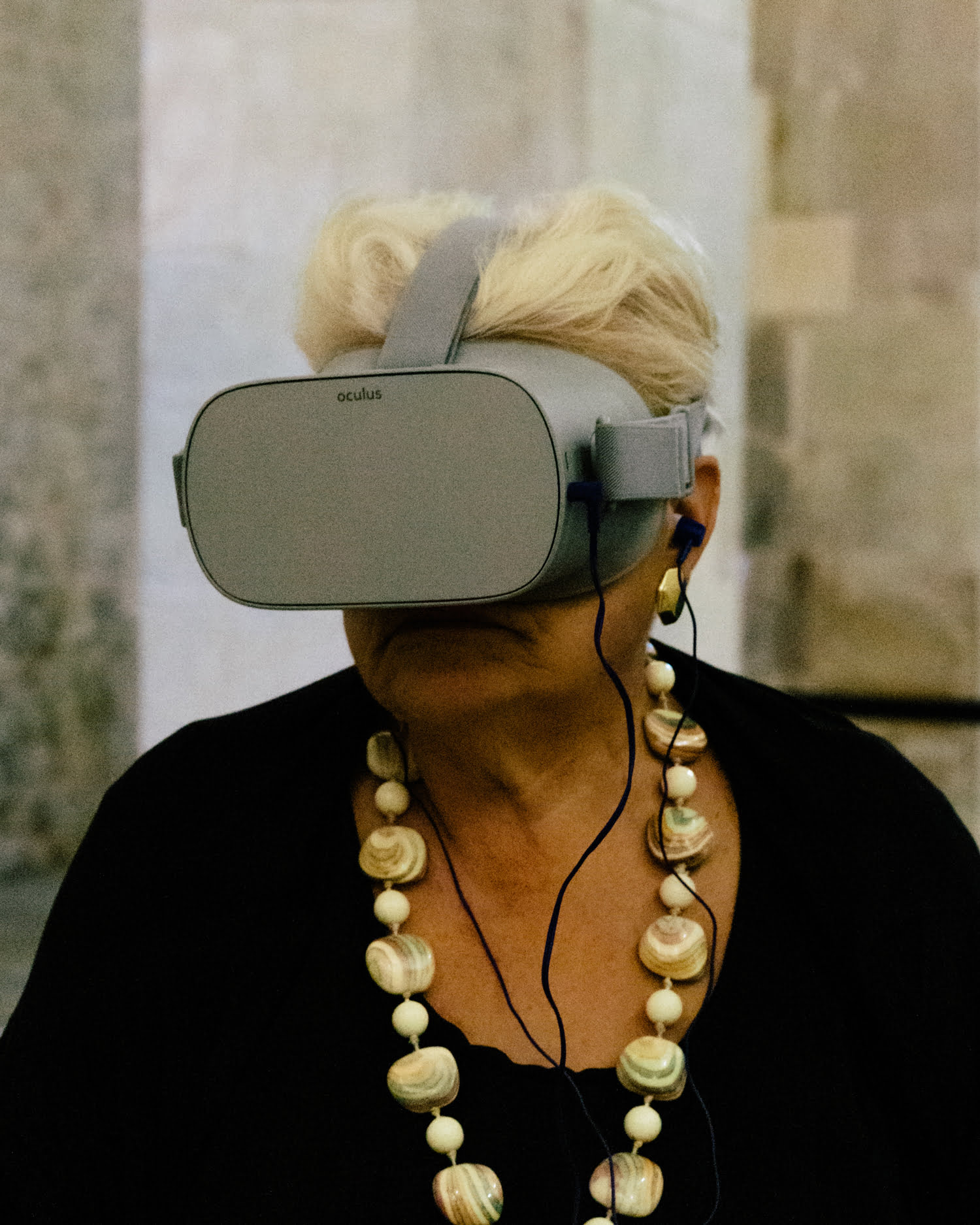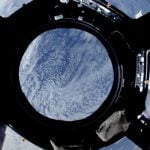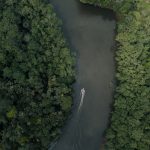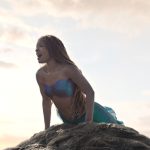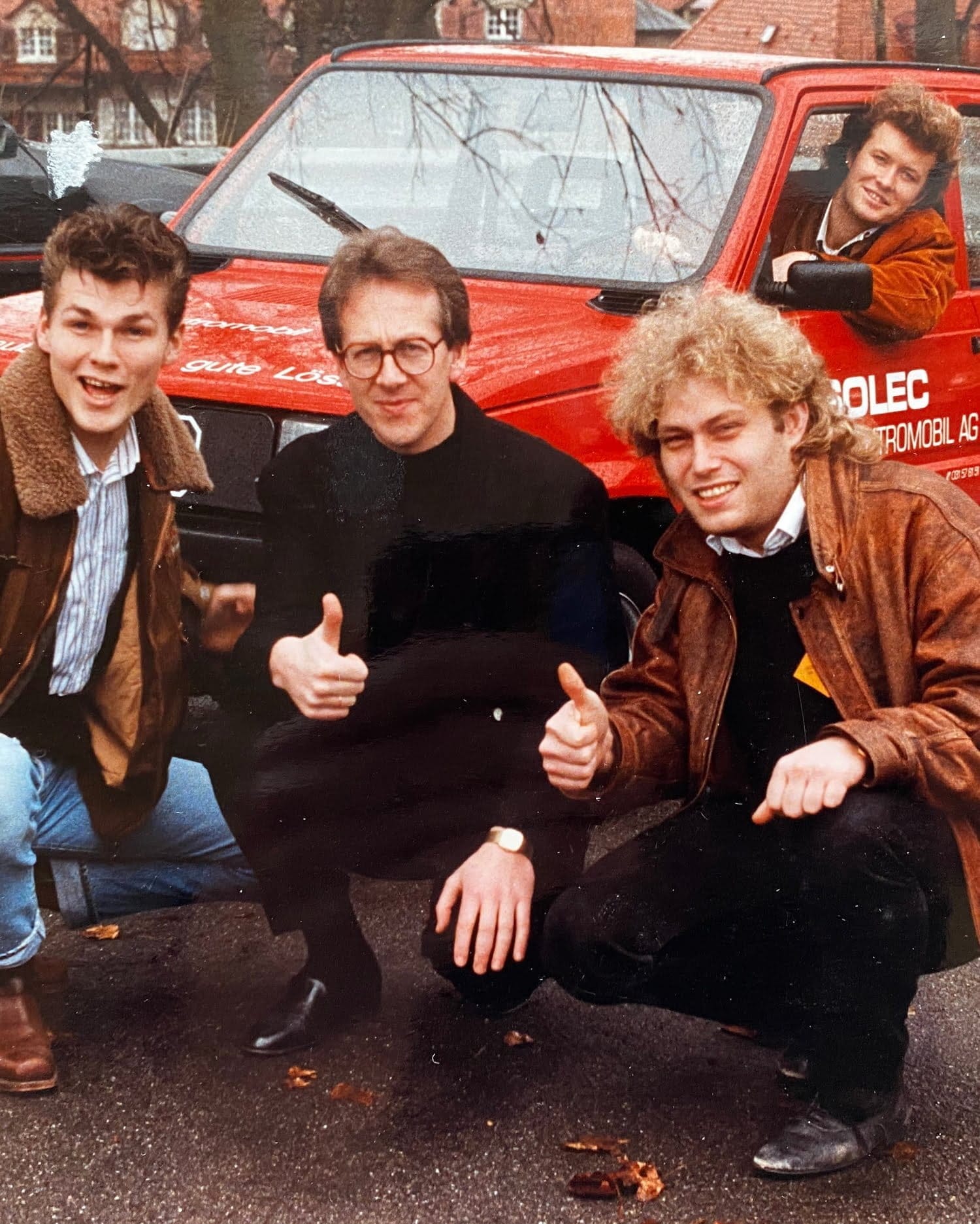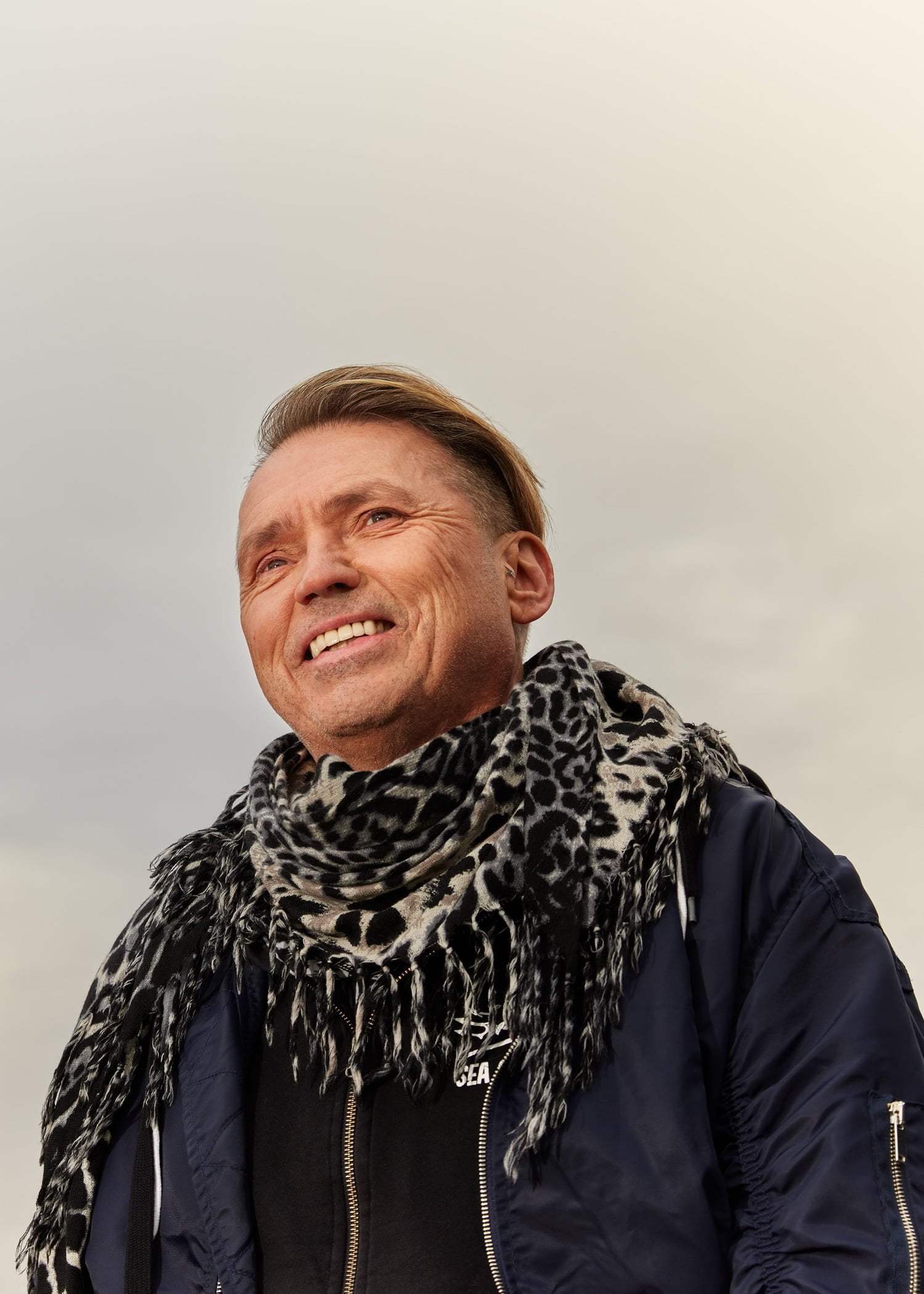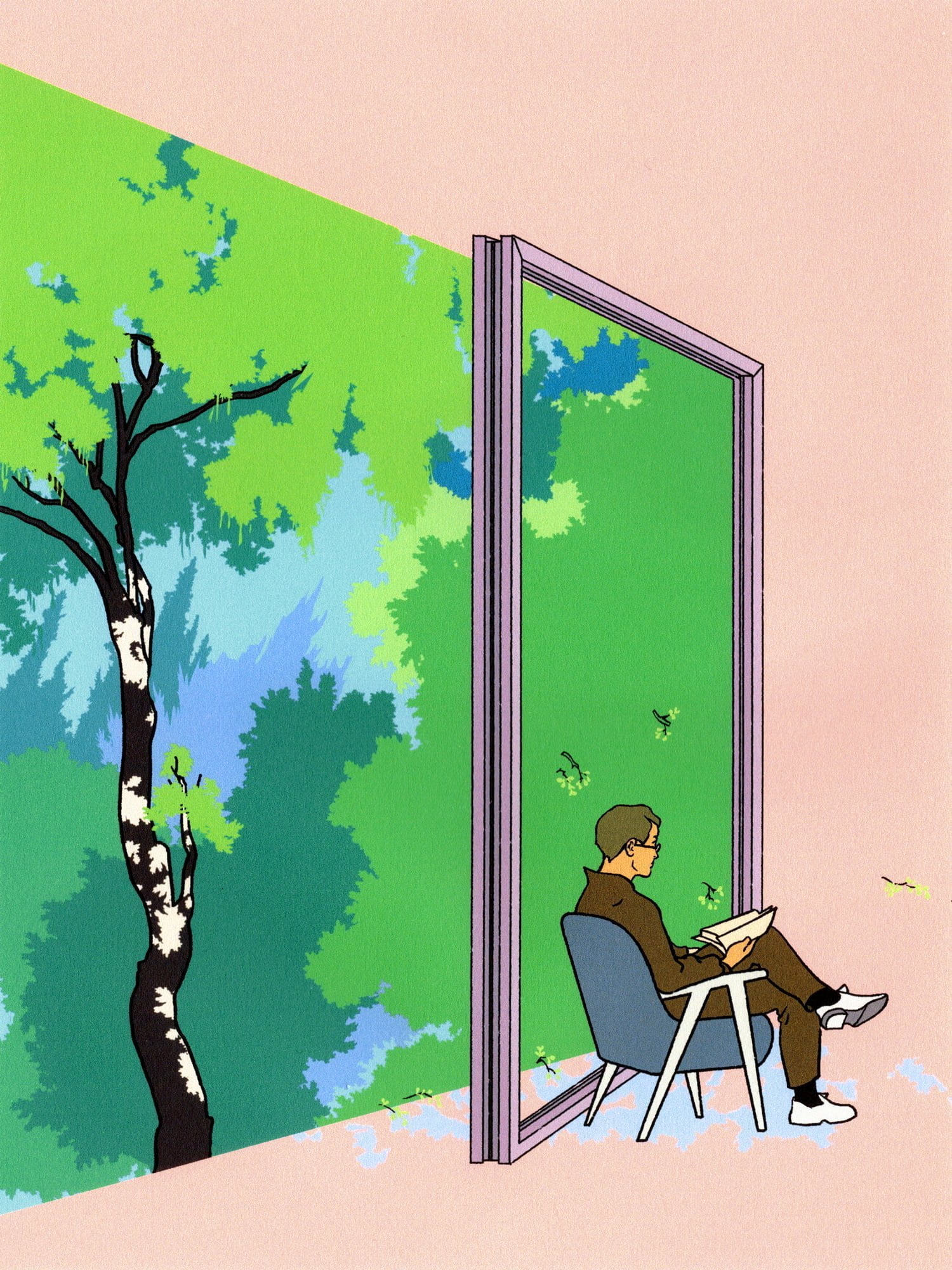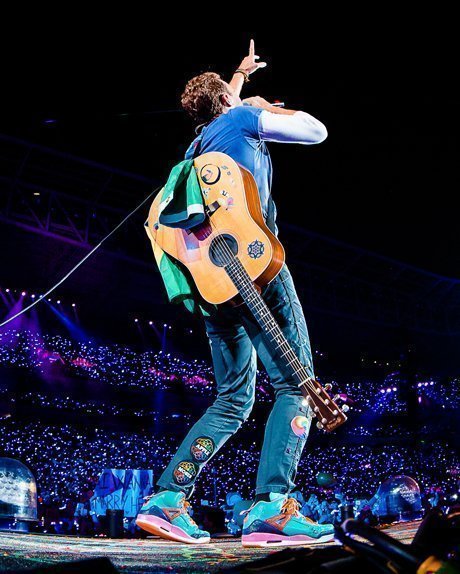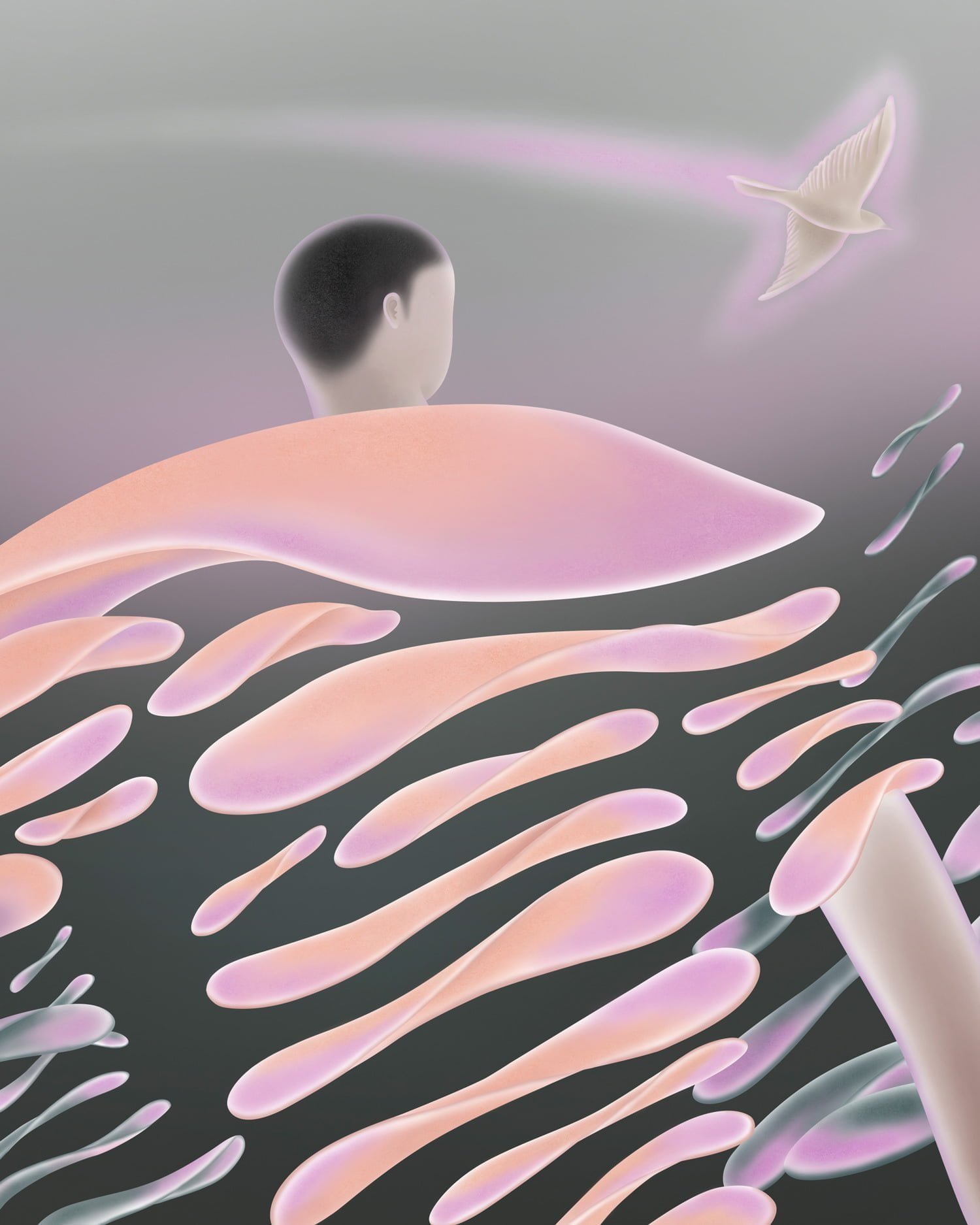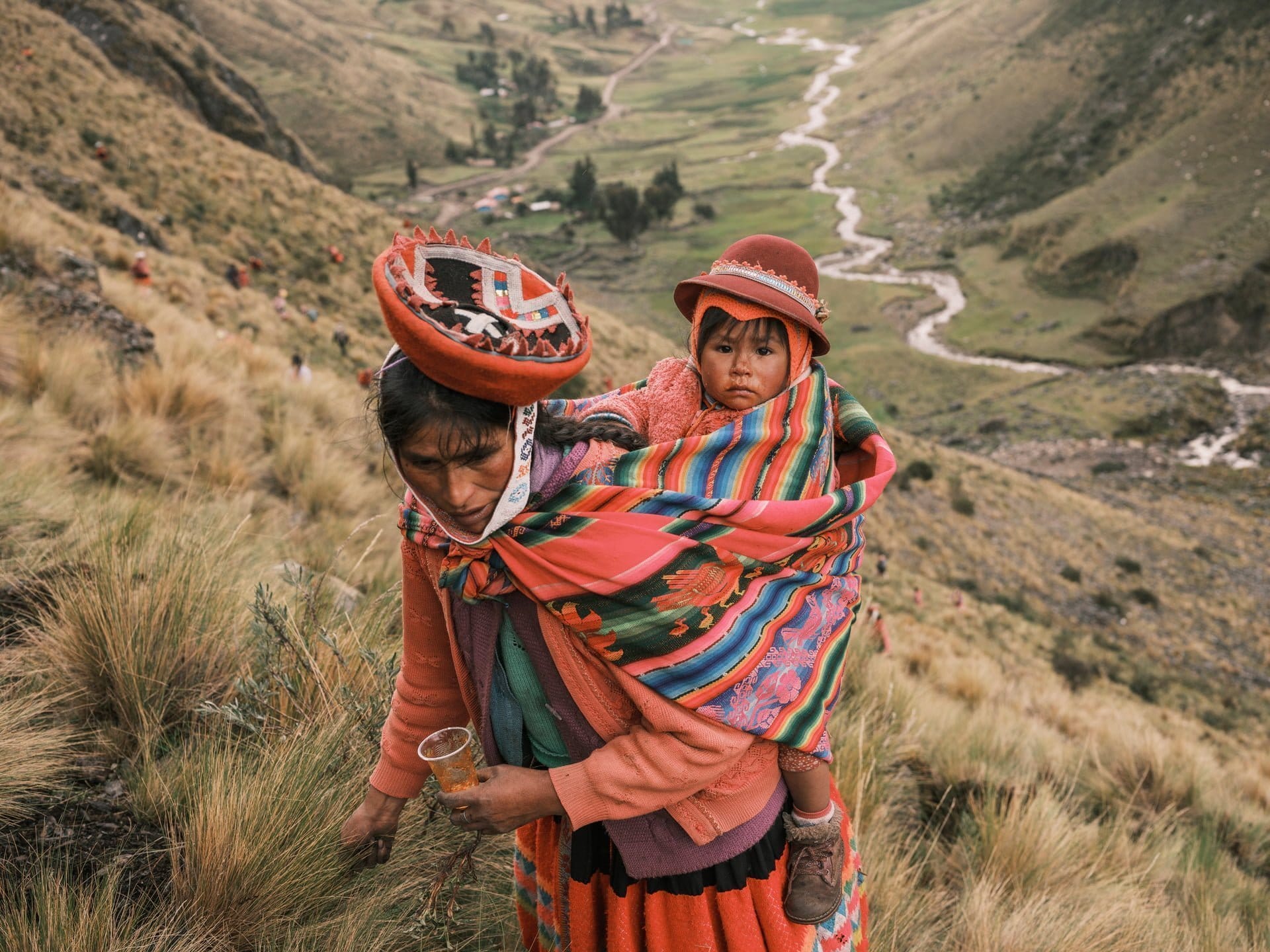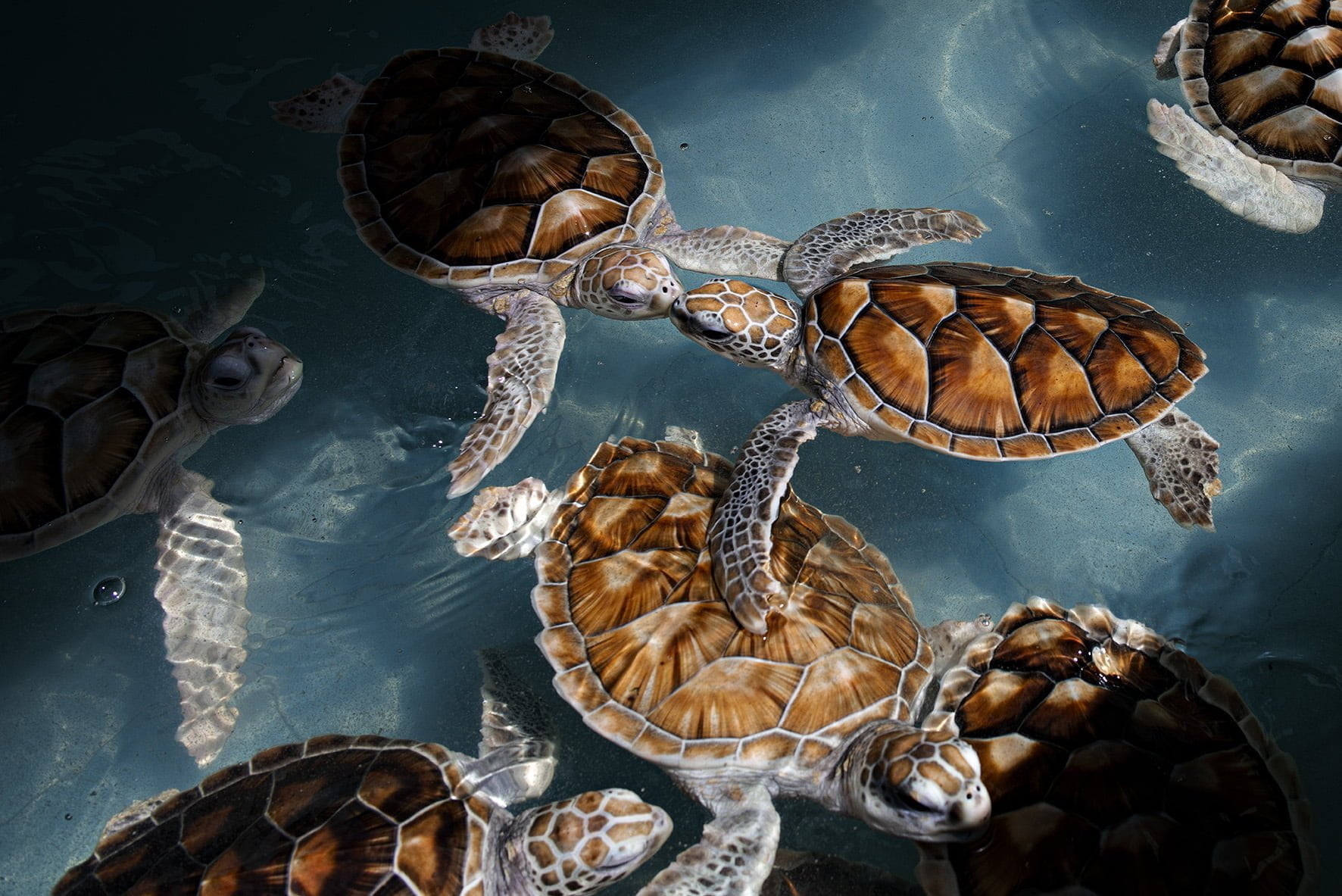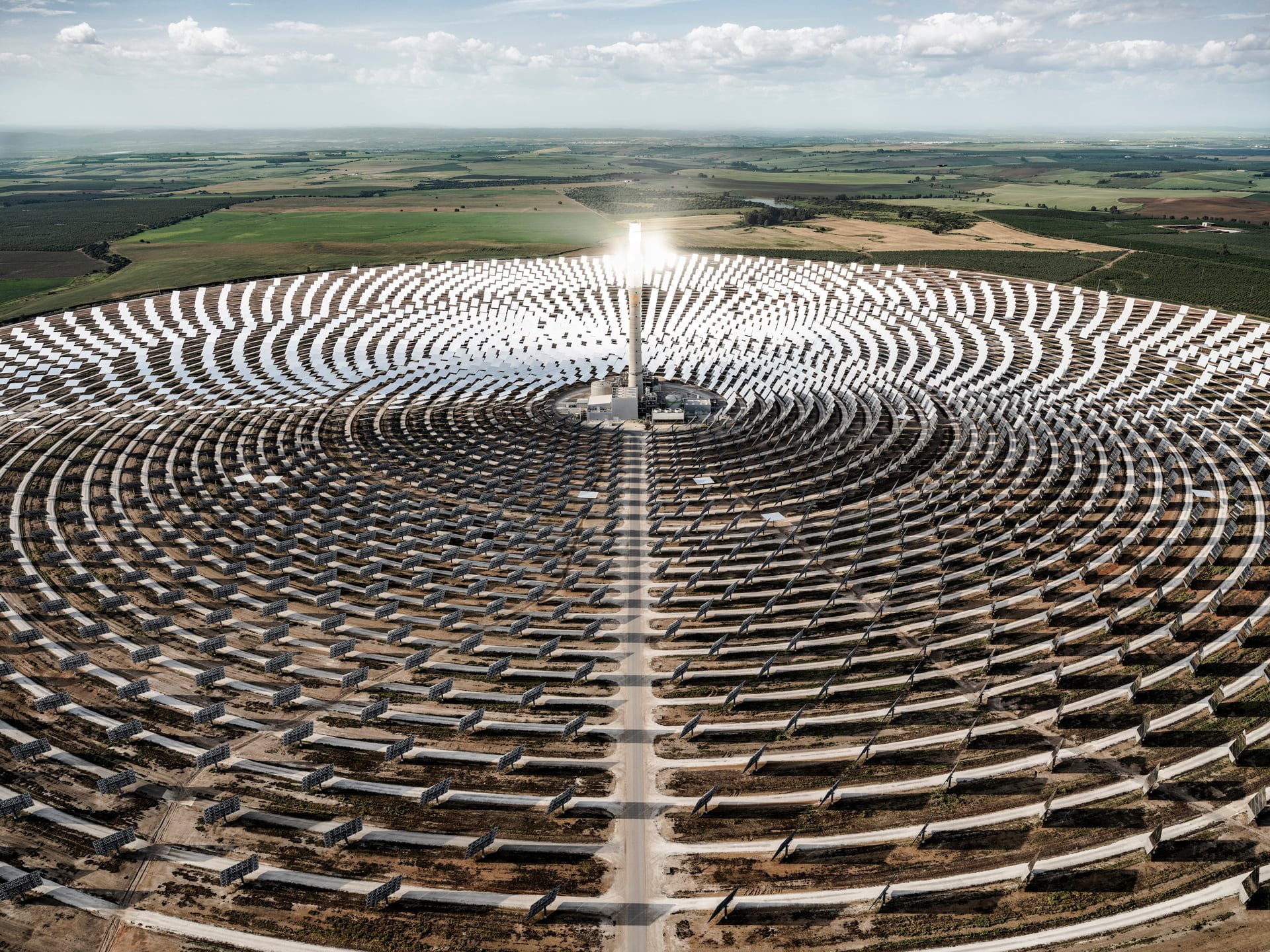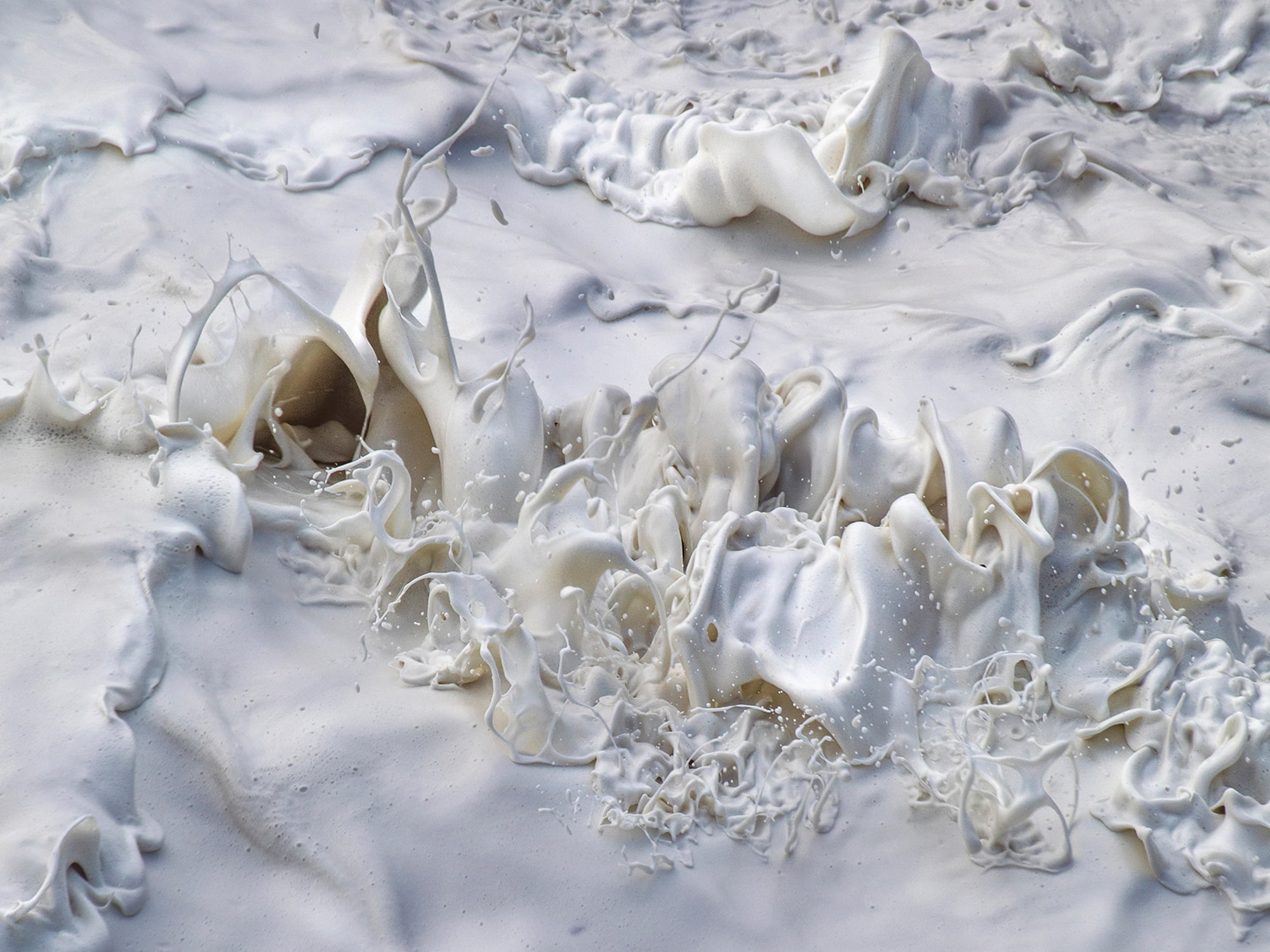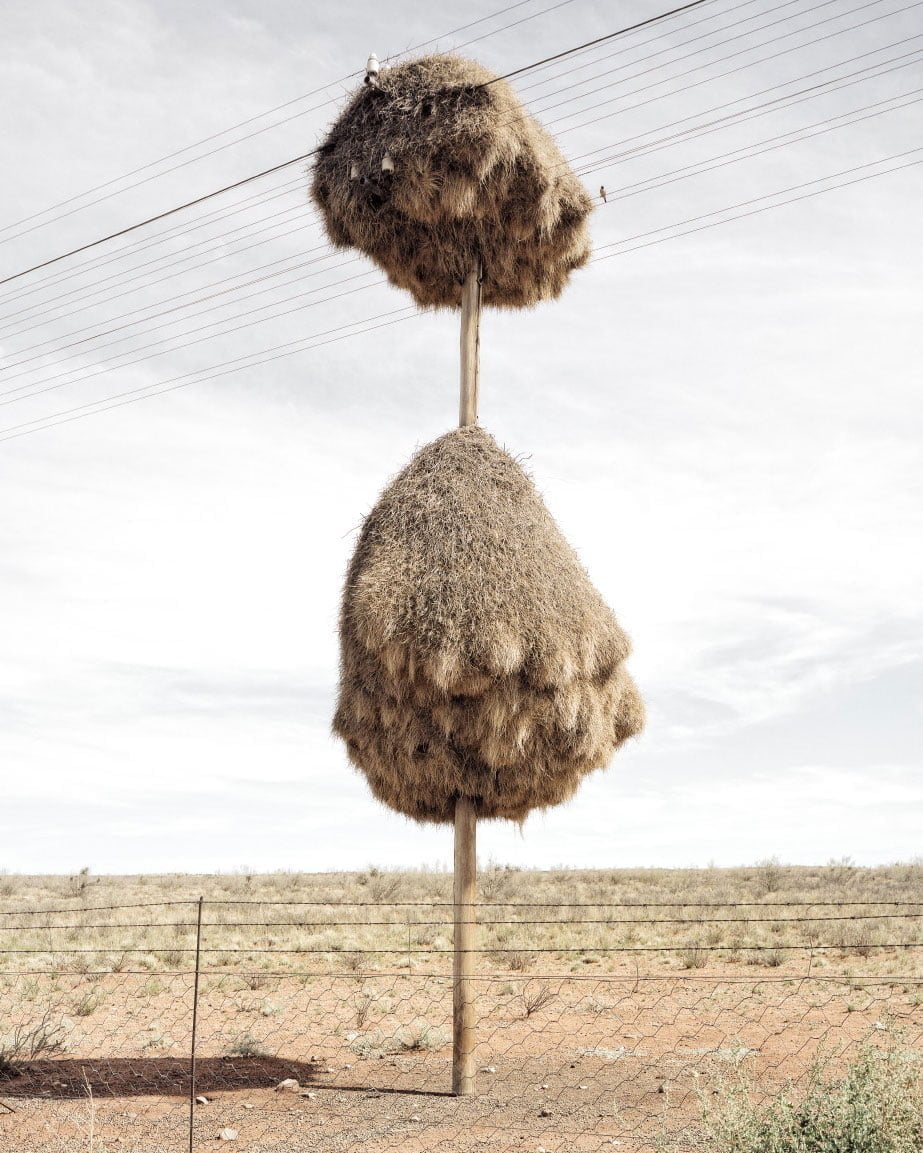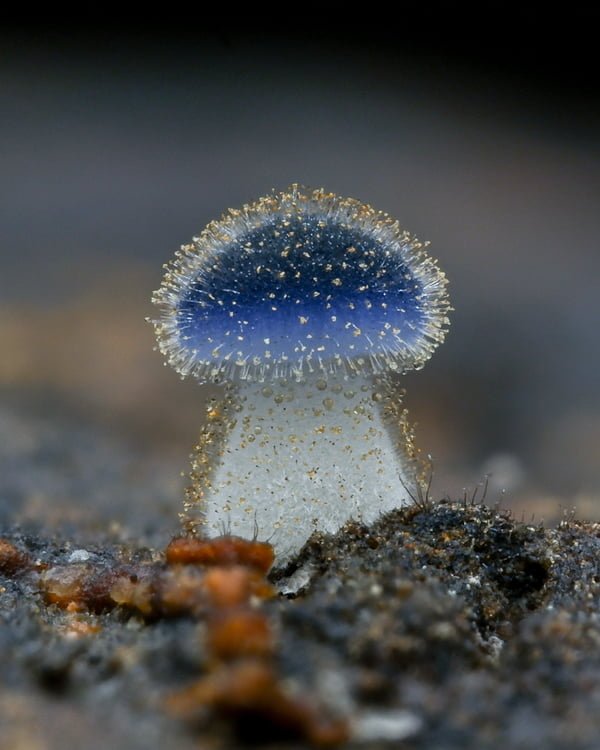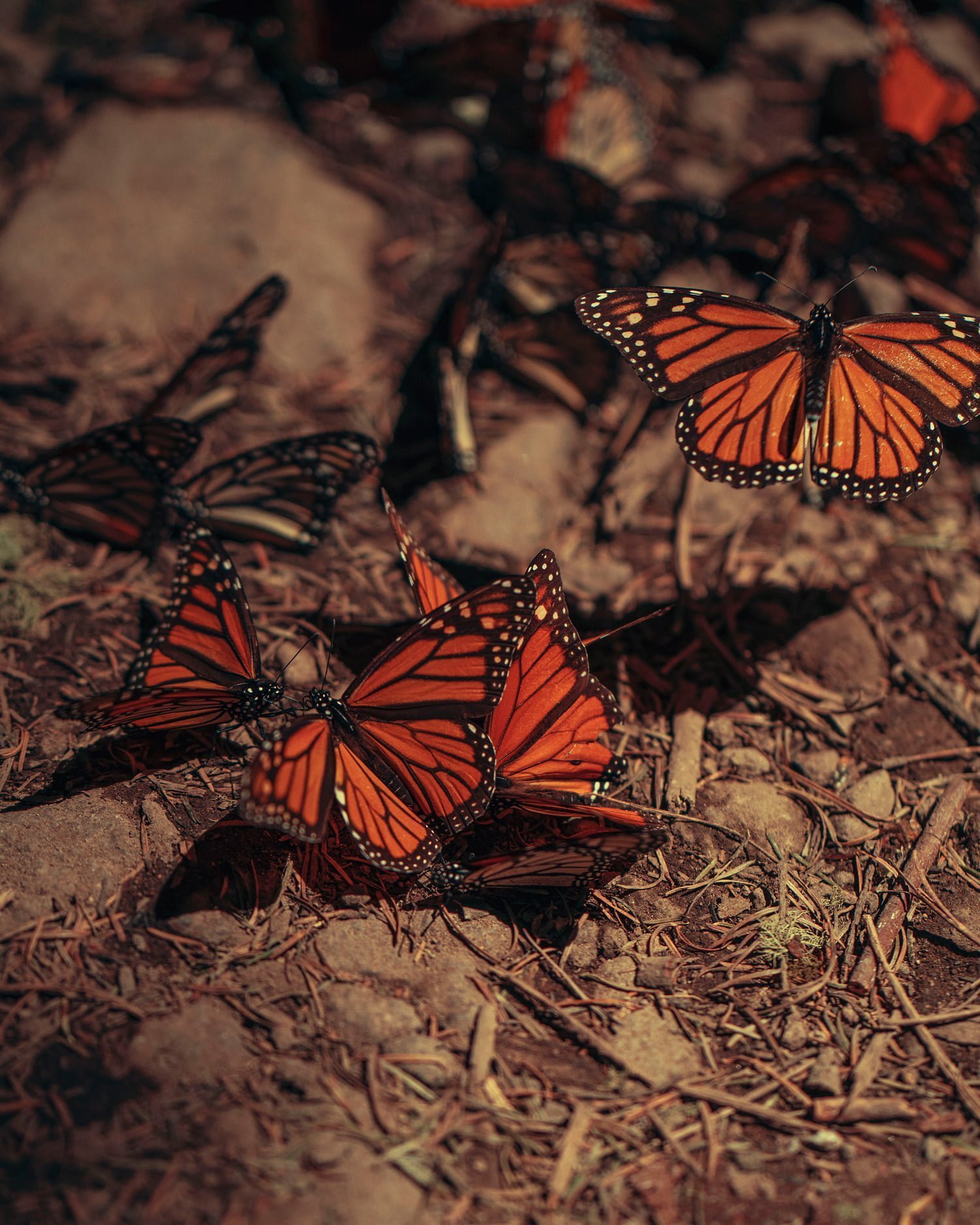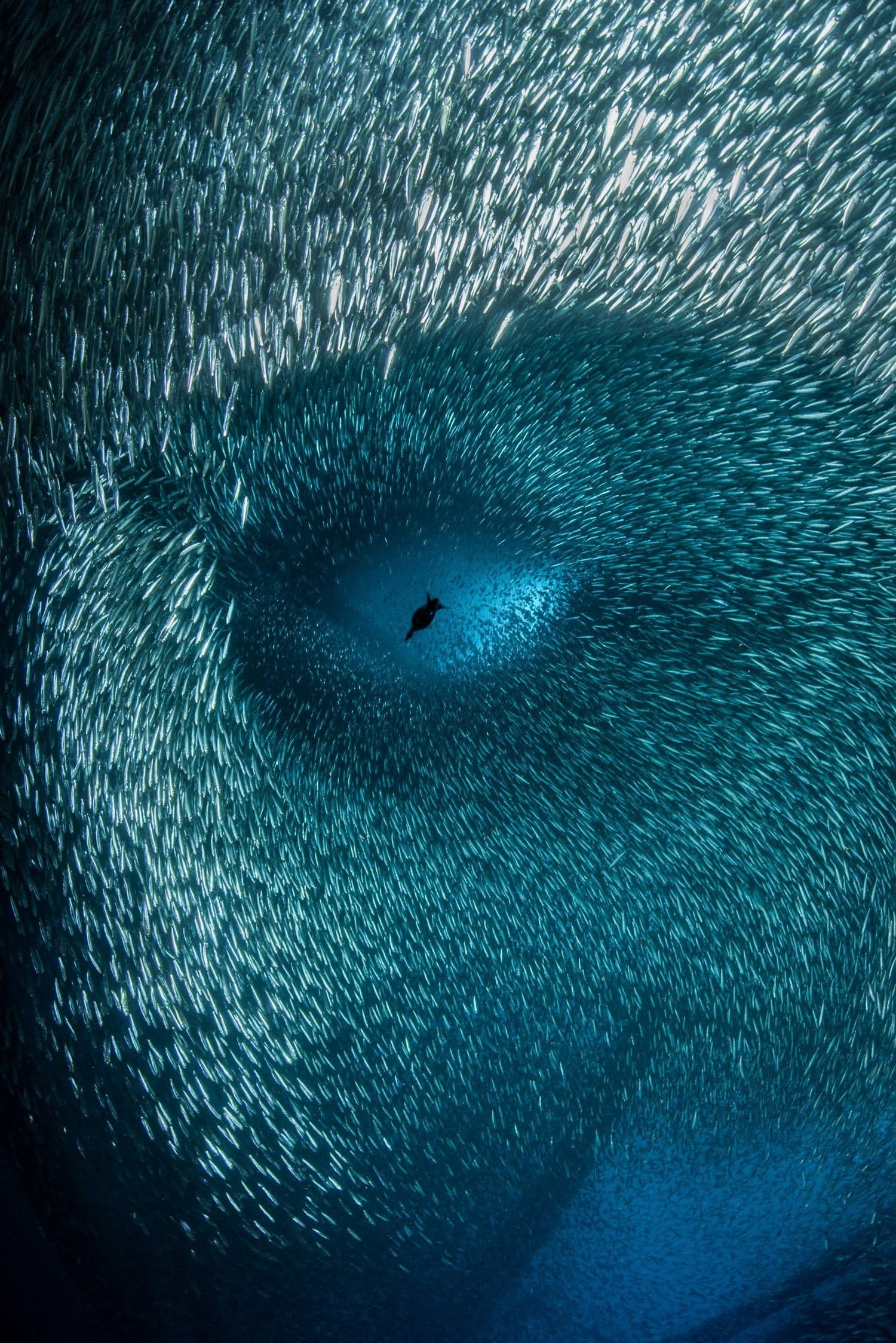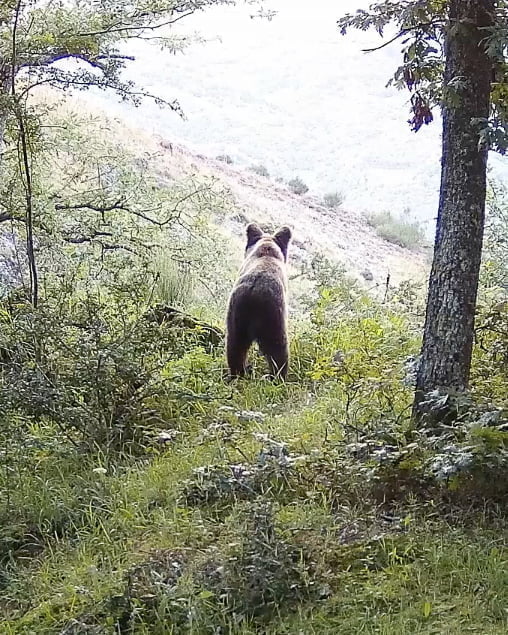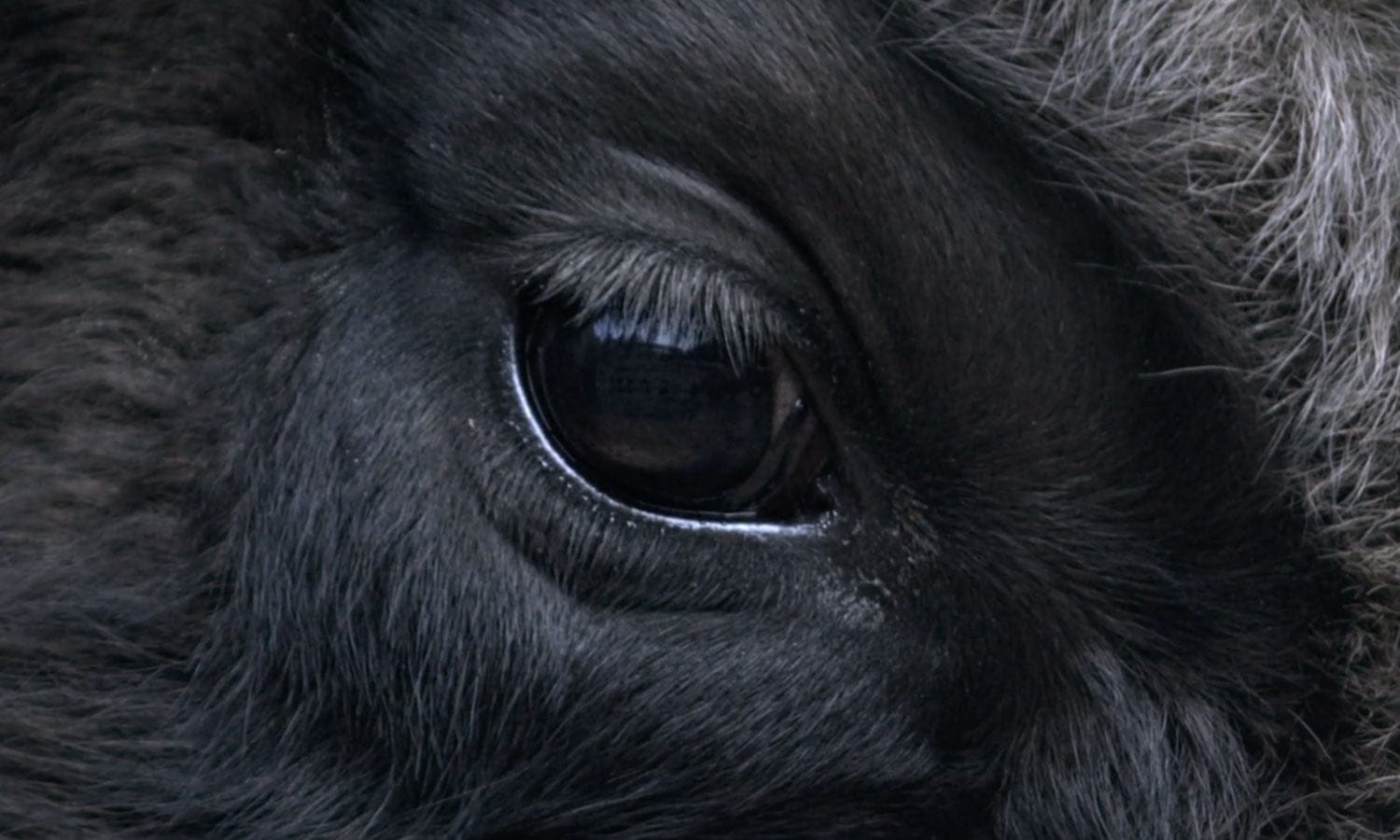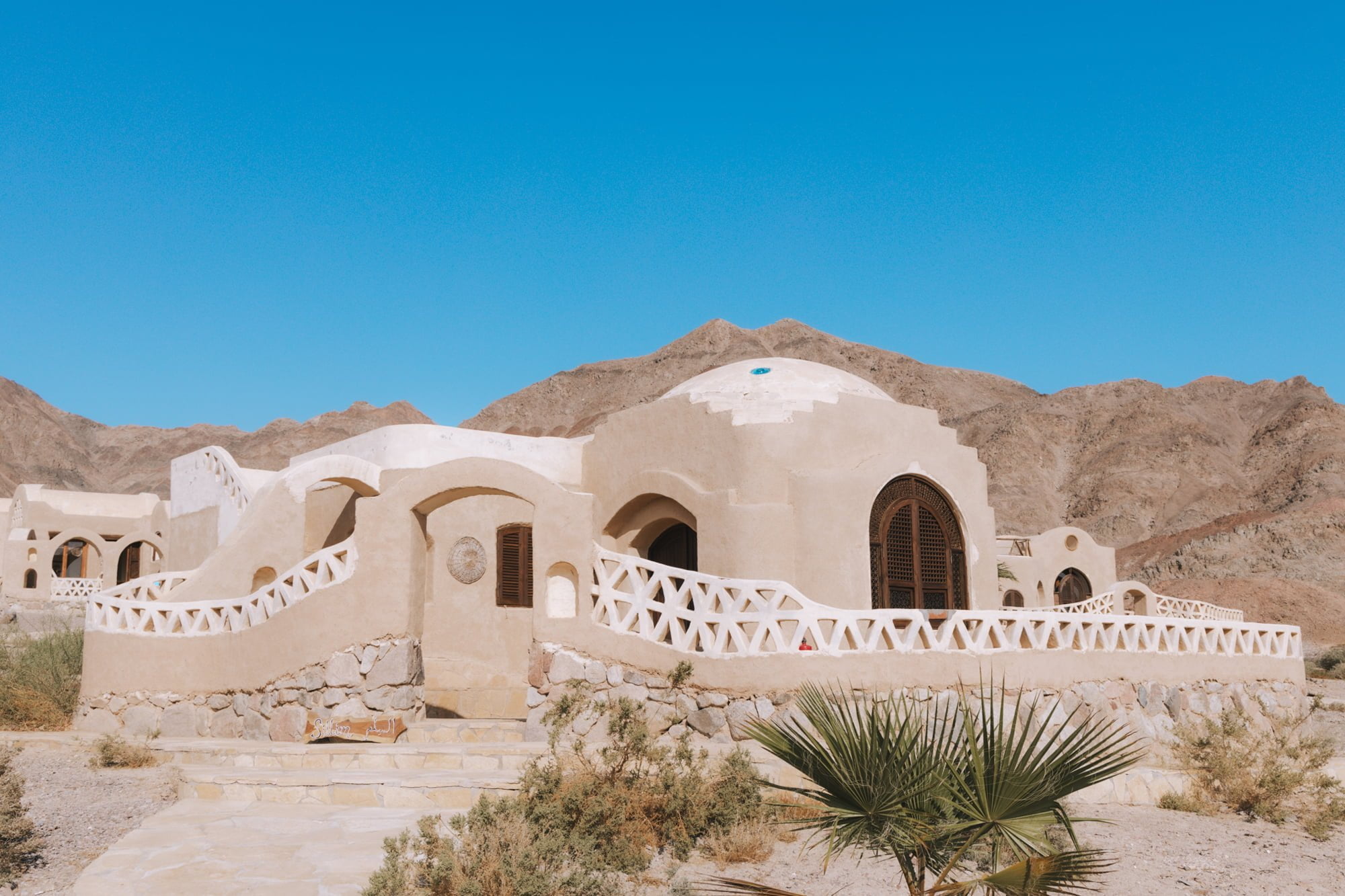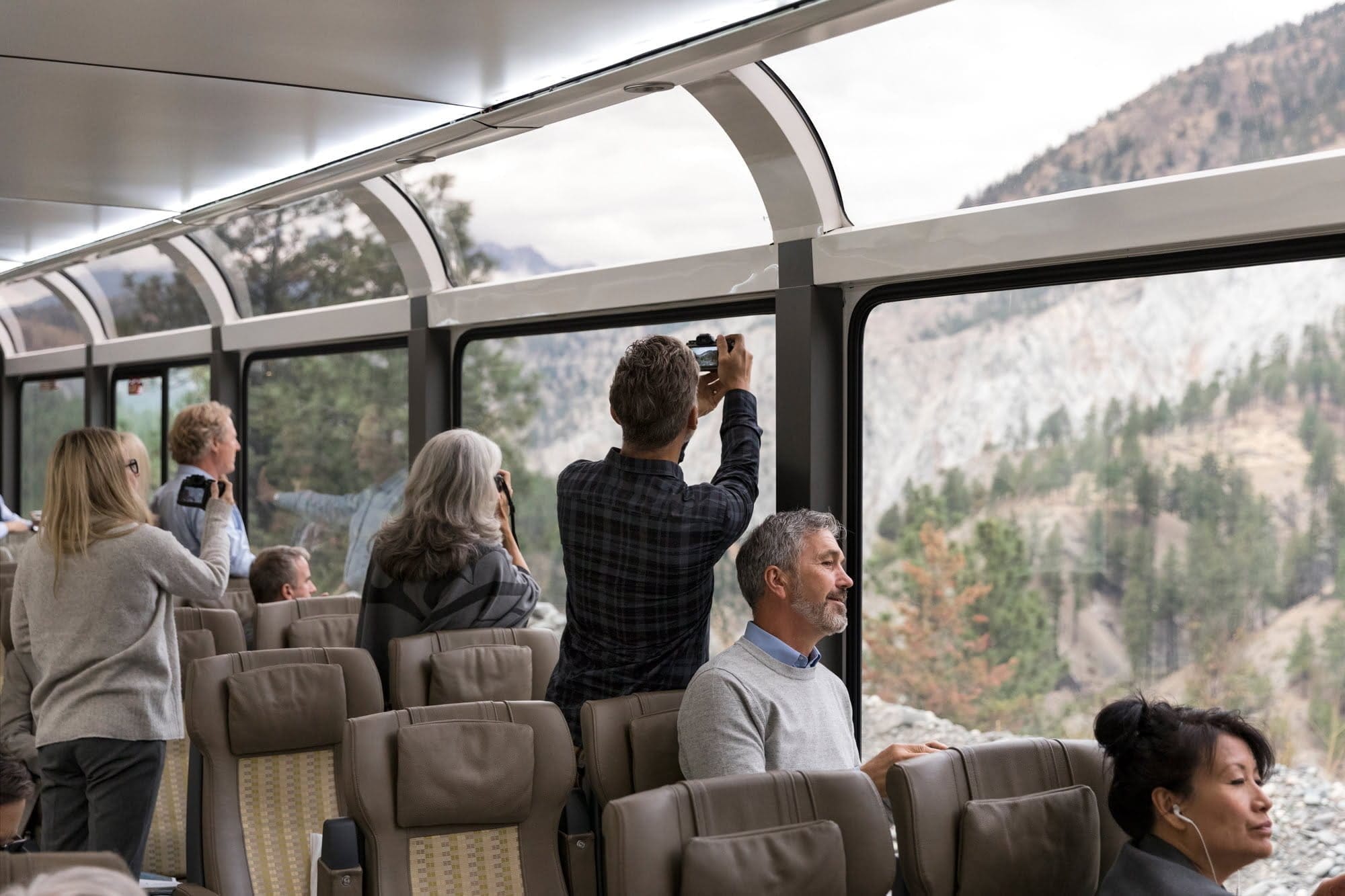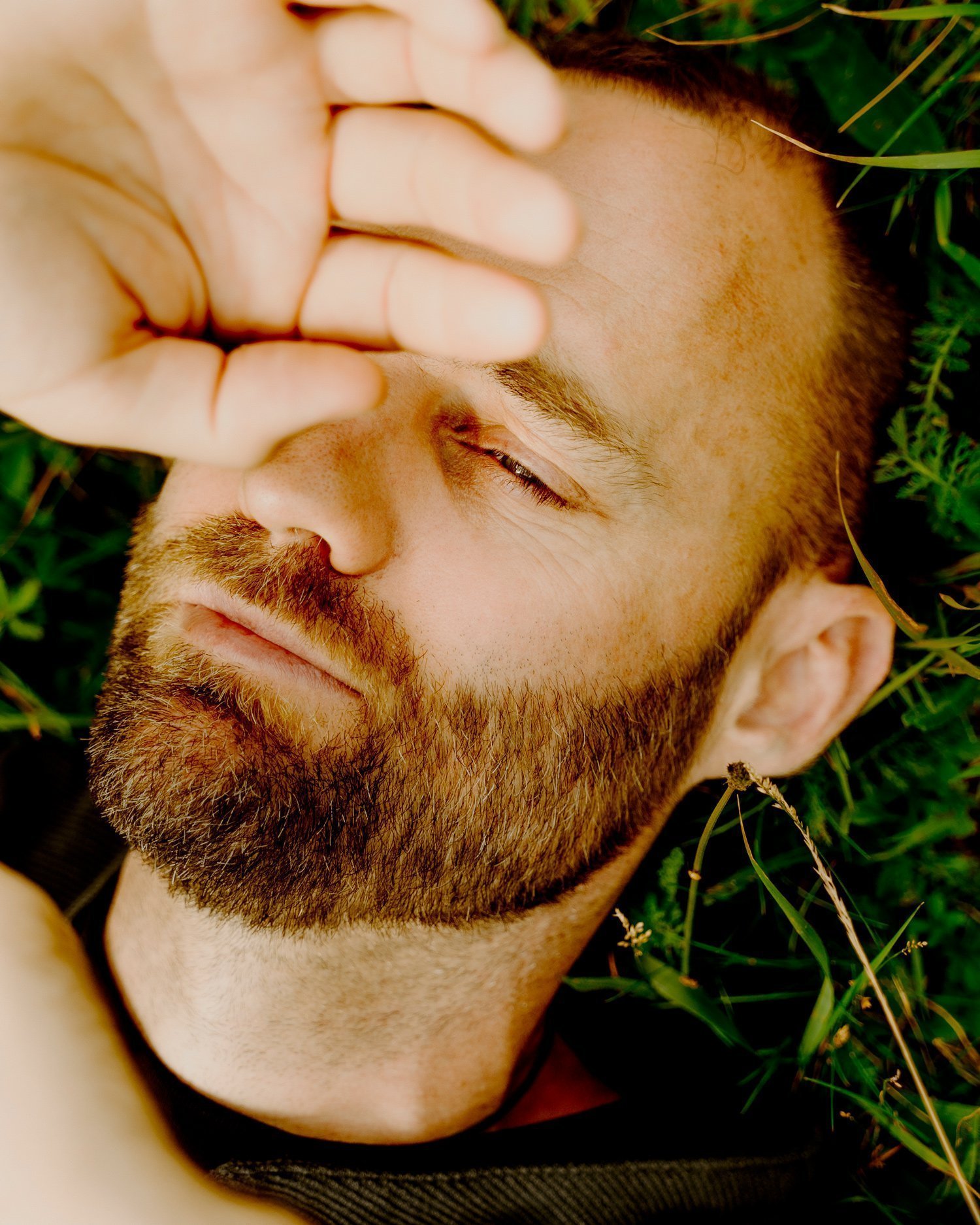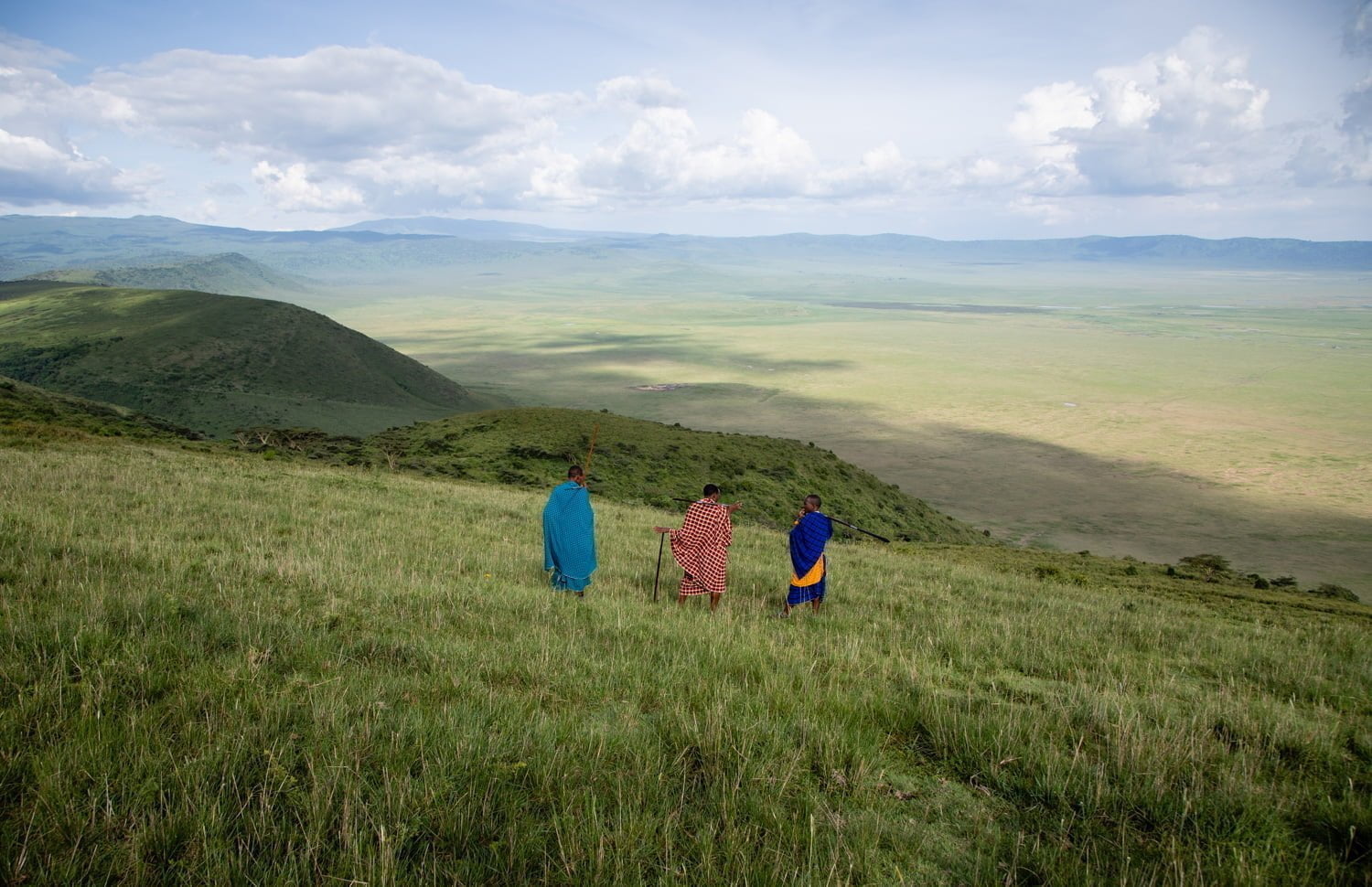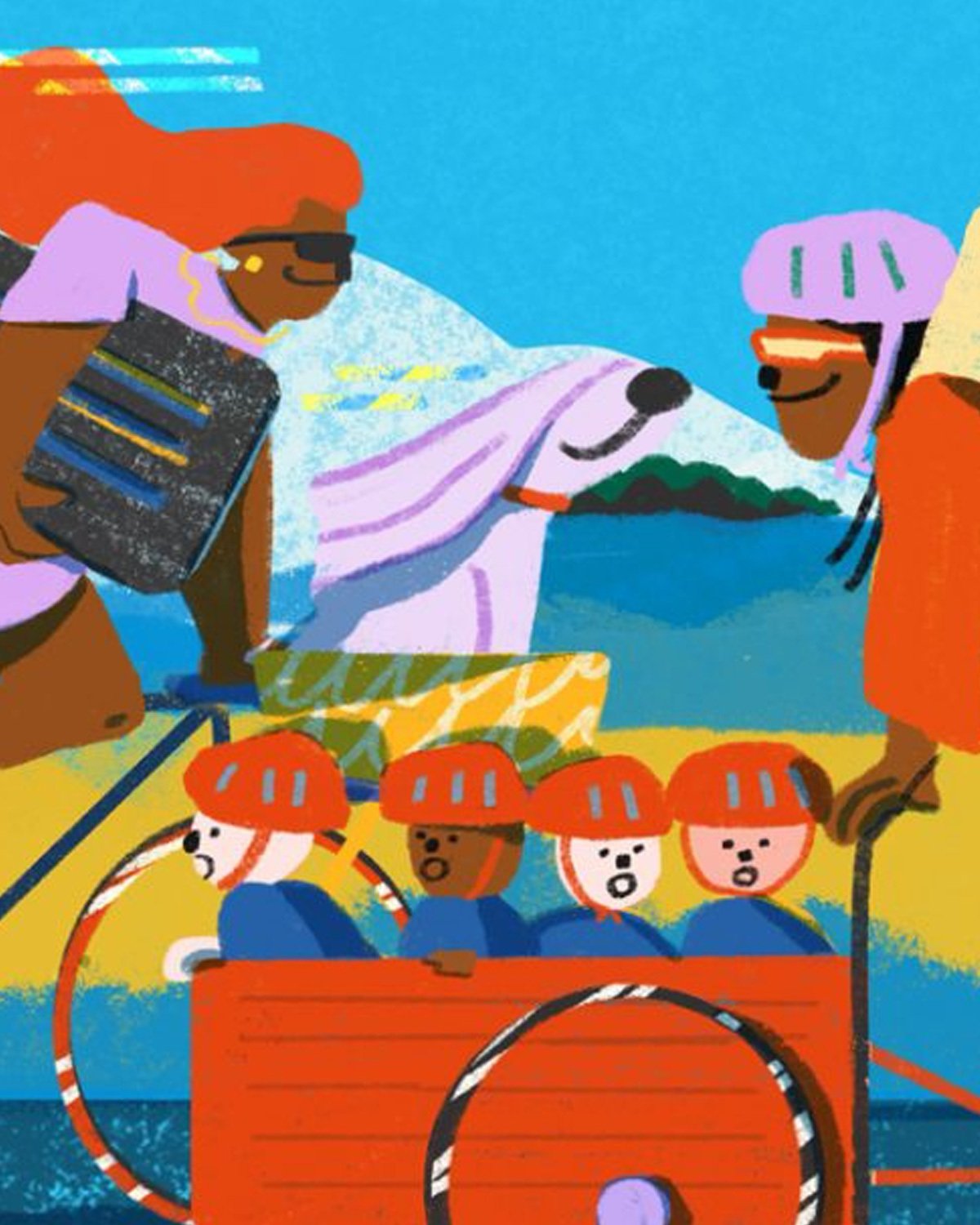Virtual and augmented reality experiences are bringing people face-to-face with the impact of human activity on our planet.
Imagine you could curb climate change and rewild the planet with the power of your feet. By taking a few simple steps to the left or to the right you could transform a parched savannah or a denuded Amazon into a lush ecosystem full of life and wonder.
Now you can. That’s the premise behind Rewild Our Planet, an immersive storytelling project that uses augmented reality (blending virtual reality into real-life surroundings, through a screen or headset) to inspire environmental awareness and action.
With exhibitions in Singapore, the UK and New York, the groundbreaking project places participants on a 3D-printed stage, that features a giant crater and projection screens. Using their smartphones, they can navigate to one of four AR biomes: ice, forest, grassland, or ocean. Each landscape begins as a thriving ecosystem, but as participants interact with their chosen biome, it is dewilded before their eyes – illustrating the destruction that human activity is having on the planet.
“It feels like real life. It feels like truth”
Chris Milk, VR pioneer
Then, by moving around and interacting with each other, users ‘rewild’ the barren biomes to thriving ecosystems once again. Finally, users are invited to make a ‘pledge for the planet’. Hovering overhead are thousands of shining blue orbs, representing all the pledges made by others, and leaving players with a galvanising sense of community and global collective action.
“Rewild showcases how AR has the power to build bridges between people and the places they love,” explains Trent Clews-de Castella, CEO of Phoria, the VR and AR studio that created it. “We wanted them to embrace a renewed sense of optimism about environmental efforts.”
The world did embrace the project – which Phoria created in partnership with Netflix, Google, and the World Wildlife Fund to complement Sir David Attenborough’s TV series Our Planet. Over 30,000 people experienced it and made their pledges for the planet, and an adapted version has now been released as a free app, so anyone with a smartphone can bring balance to a biome from their kitchen or living room.
Technology for a better world
It’s a very different kind of project from what Phoria started out doing. Founded in Melbourne, Australia in 2014, the studio cut its teeth creating virtual home viewings for the real estate market. This led to a collaboration with TV show The Block, in which contestants compete to renovate and sell houses.
But the company’s focus shifted after a young fan of The Block who was being treated for cancer, wrote to ask if they would bring the VR experience to her hospital ward. They said yes. When they saw the effect it had, and read the girl’s letter of thanks afterwards, everything changed.
“It was a very profound experience for us,” says Clews-de Castella. “It was probably the most heartfelt message I think I’ve ever read and it really encouraged us to think outside the box. We realised that there was something unique about these tools and we started to question how they could be used for good.”
With the help of a small grant from the Royal Children’s Hospital in Melbourne, Phoria continued to explore the healing potential of virtual reality. After being overwhelmed with positive feedback and witnessing the power of the technology to create impact they were inspired to broaden their scope.
What really excites Clews-de Castella and his team is the power that these new technologies have to tackle humanity’s greatest challenges and shape a better world. In our digital age, competition for our attention has never been more fierce, and it’s tough for issues-based stories to cut through. Could immersive tech, with its ability to build strong social connections and spark moments of wonder, be the answer we need? Could virtual ‘lived experiences’ drive the level of change the world demands of us?
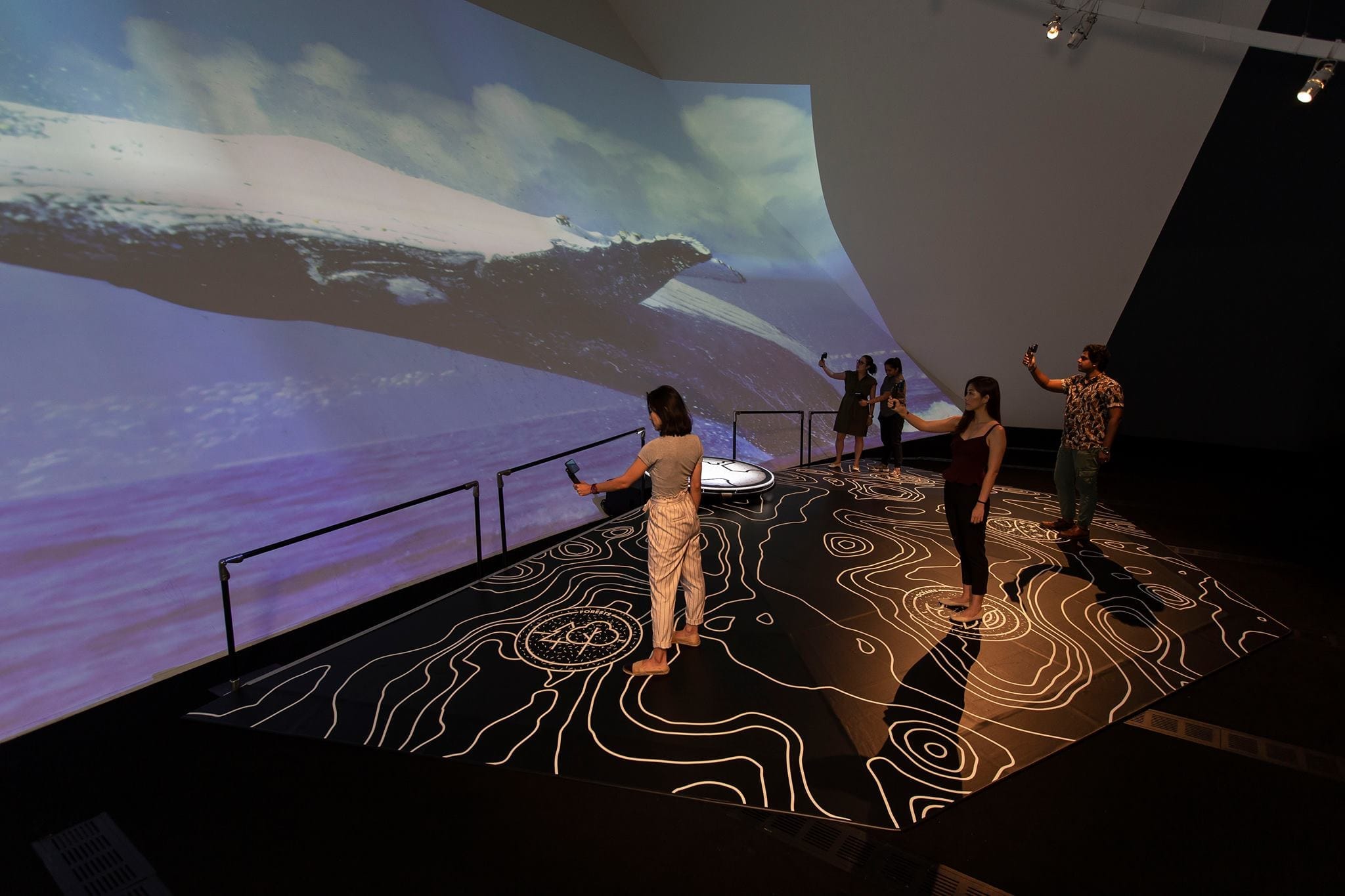
The power of empathy
VR’s potential isn’t just about transformative experiences for individuals. When used strategically in the right setting, its impact can be even bigger.
At a 2015 fundraising event for Syrian refugees, guests were shown a VR film called Clouds Over Sidra. Organisers hoped the event might raise around two billion dollars. After watching the film, in which a 12-year-old girl describes her life in a refugee camp, donors parted with a total of nearly four billion.
In his 2015 TED talk, VR pioneer Chris Milk (one of the creators of Clouds Over Sidra) described virtual reality as ‘the ultimate empathy machine’. “You feel present in the world you’re inside,” he tells us, “You feel present with the people that you’re inside of it with. It feels like real life. It feels like truth.” This has been backed up by research from Stanford’s Virtual Human Interaction Lab, which found that VR can make people more compassionate than other forms of storytelling.
The lab also demonstrated the technology’s power to change minds and shape behaviour. In one experiment they had participants cut down trees with a virtual chainsaw while holding a vibrating joystick. Their paper use went down by 20 percent. In another study, they inspired passion for the oceans by showing, ‘in rich detail’ the havoc that rising CO2 and ocean acidification will wreak on our beautiful reefs.
The best VR and AR experiences can be so lifelike and immersive that they trick our brains into thinking the experiences are real. For Clews-de Castella, the most powerful thing about mixed reality storytelling is that “it can take the best of all mediums and include them in one interactive and transformative experience.”
When Covid induced a global lockdown, VR was turbocharged. Online platforms like Roblox and Sandbox exploded, and Tuvalu announced that it plans to upload its entire country to what has become known as the ‘metaverse’. While everyone was locked in their bedrooms and searching for new forms of communication and entertainment, Phoria was working on a way to transport them to the wildest places on the planet.
In 2020 they released Ecosphere, a VR nature documentary series that takes audiences to the savannahs of Kenya and the forests of Borneo, to see how humans and wildlife are living alongside each other. Sea of Islands looks at the impact of climate change in Fiji, and has been screened at the United Nations General Assembly.
The studio has also used VR to showcase the role Australia’s First Nation’s people can play in fire management, taken audiences on a tour of Greenpeace’s Rainbow Warrior boat, given birth to an AR frog to promote Australia’s biggest frog count, and created an app exploring how an Australian town can survive bushfires and storms.
Connecting people to ancient wisdom
Phoria’s next project is a celebration of the world’s oldest living culture. Set in the Daintree Rainforest in the north of Australia, Julaymba uses mixed reality storytelling to immerse users in Indigenous language and wisdom.
“We learned of an amazing story,” says Clews-de Castella. “When you are born into the world, they put the placenta next to the nearest tree. Then that tree becomes a sibling to the child and the child has a responsibility to look after the tree like it’s a family member. Over generations, the trees become a forest of their ancestors.”
“Mixed reality is uniquely powerful because it lets users guide their own journey”
Trent Clews-de Castella, Phoria
This connection to nature, Clews-de Castella believes, can help us tackle our greatest environmental challenges. “We know First Nation Australians have the answers, we know that they understand how to care for Country. We hope that this project will disarm users, put them in someone else’s shoes, see through their eyes and understand the relationship they have with nature.”
Phoria wants to build on the project and share more Indigenous wisdom and stories, working work closely with First Nation communities. “We start with the question, ‘How can we connect users with the wildest places and oldest cultures on earth?’” says Clews-de Castella, “Our goal is to create embodied experiences that contribute to behaviour change and support the regeneration of life.”
One thing Clews-de Castella learned when getting feedback from people taking part in mixed reality experiences, is that “everyone likes to interact with different content in different ways”, so it always feels unique and personal. “Mixed reality is uniquely powerful because it lets users guide their own journey,” he said.
Which is why the best way to appreciate its transformative power, is to try it for yourself.
Try it for yourself
Download Phoria’s Rewild app for your phone
Get the appCheck out UNVR’s 360-degree films
Watch them hereExplore the VR For Good content for Meta’s Quest headset
Find out moreCULTURE FOR CLIMATE
WANDERLUST
